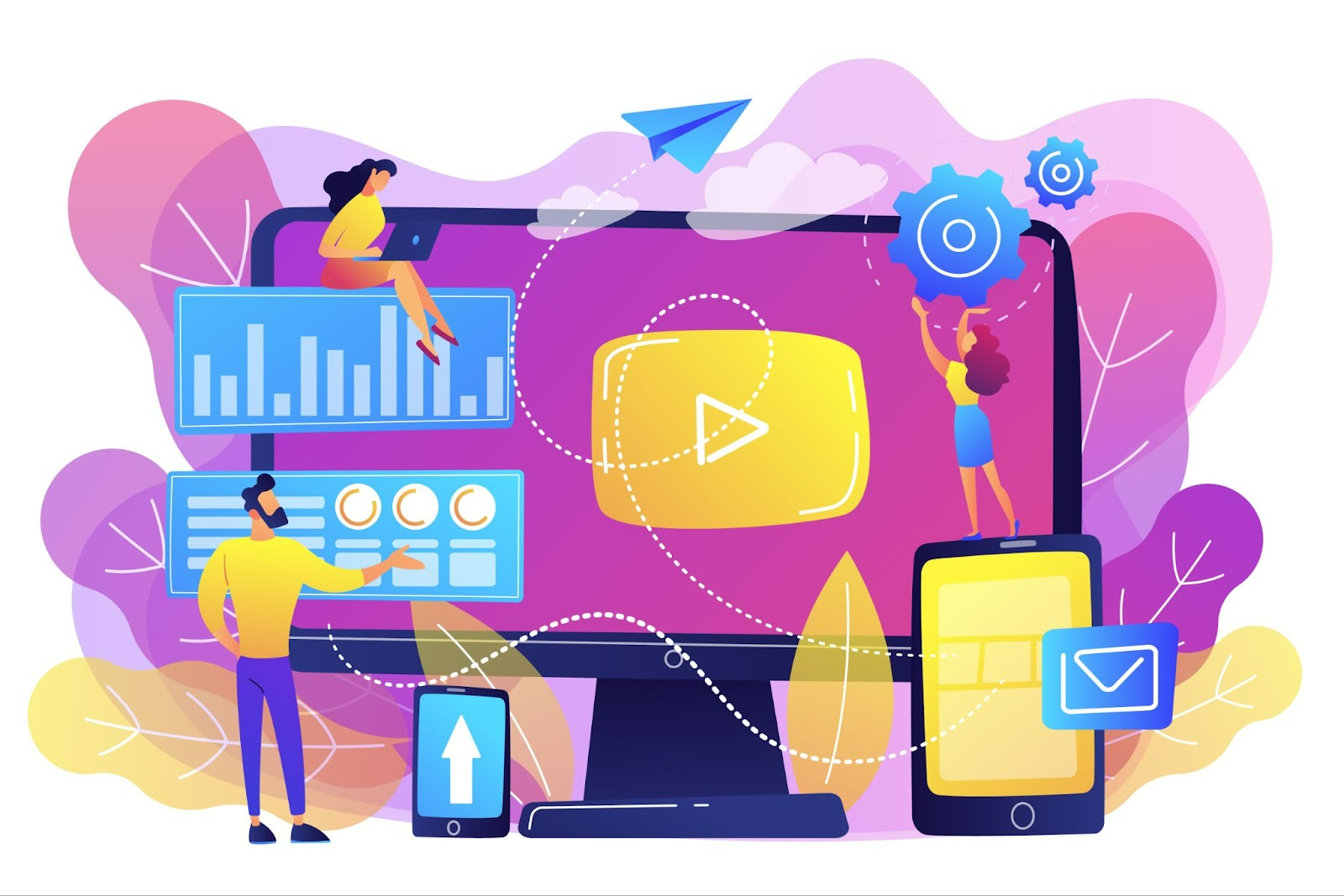
How To Advertise On Facebook – A Beginner’s Guide
If Facebook is still not a part of your Digital Marketing strategy, you are missing out on serious business. With over 8 billion active advertisers, Facebook has emerged as the prime destination to market your business right where your audience is. To engage the audience Facebook posts are important and easy. Posting jobs is a really important process for your business and your online presence. It is essential to learn how to post a job on Facebook, educational posts, image posts, tips, infographics, Industry news, etc. Similarly, Facebook ads are easy to set up and are the single best alternative to Google Adsense. In short, Facebook ads do work. For more on how Facebook ads work and how to advertise on Facebook, read on.
Compared to Youtube, Facebook advertisements don’t serve as a visible distraction. Facebook advertising is intelligently placed in the natural flow of information in the news feed and it doesn’t obstruct social browsing in any way. Facebook doesn’t force users to sit through ads, as Youtube does. With billions of users spending more than an hour browsing through Facebook and Instagram, getting across active users is easy. Facebook offers detailed targeting options whereby users with specific interests and professions can be easily targeted.
If you are interested in how to advertise on Facebook, this guide will take you through a successful campaign setup.
1. Preparations For Campaign
It’s essential with the multitude of options Facebook offers in its Manage Ads section. Getting to know how to advertise on Facebook, prior groundwork is extremely important. Most often, advertisers focus too much on their business websites and leave their Facebook pages incomplete. This may lead to serious credibility issues, especially for new businesses. It is essential to check the completeness of the About us tab on your page. To write the company overview and product description you can take the help of an experienced content writer who writes content or writing essays for money.
Once you are set, it is time to research and finalize your campaign goals, target audience, and unique selling features. This will define your advertisement parameters required in the subsequent steps.
A click on the drop-down menu at the extreme right of your Facebook account will open up the Manage Ads section, which, chooses you to the Ads Manager dashboard with the Create option.

One thing most beginners skip in the ad setup is the creation of the Facebook Pixel. It is a unique account-specific tracking code generated by Facebook. The code has to be inserted in the Header section code of your website for analysis and tracking of your ad progress. Don’t worry if you are not a coding expert. Facebook provides a detailed step by step guide for manual installations. As an alternative, you can also email instructions to your developer. This tip can prove handy for those learning how to advertise on Facebook.
This is how a working Facebook pixel account looks like once successfully installed on a website.

2. Choosing The Campaign Objective
How to create a Facebook ad that perfectly fits your business? Every advertising campaign has a unique objective defined by its business priorities. A campaign can be run solely for brand awareness purposes focusing on reaching out to a target audience. It can also concentrate on website traffic, user engagement through app installs or messages, or focus on lead generation. For campaigns designed to enhance sales, it is better to go for the conversion goal objective offered by Facebook and be conscious about Facebook ad size.
Clearly defining your target outcome is the first step towards a successful ad campaign. For example, if you are launching your new game app, your target outcome is app installations which should be clearly defined at this stage. If you have designed a video campaign for enhancing product sales, you should be choosing the “conversions” options and not the “video views” option. Of course, we like higher video views but not at the cost of our ultimate objective. If it is instead your first music album launch on Youtube, you now know which option to go for.
If you are unsure about opting for “video views” or engagement for your music video, you can always opt for split objectives by running A/B tests. The ads will run with a divided budget on two different objectives. The final results and the costs involved can help you finalize the right goal. Comprehensive feedback at every stage on how to advertise on Facebook is available during the setup process.
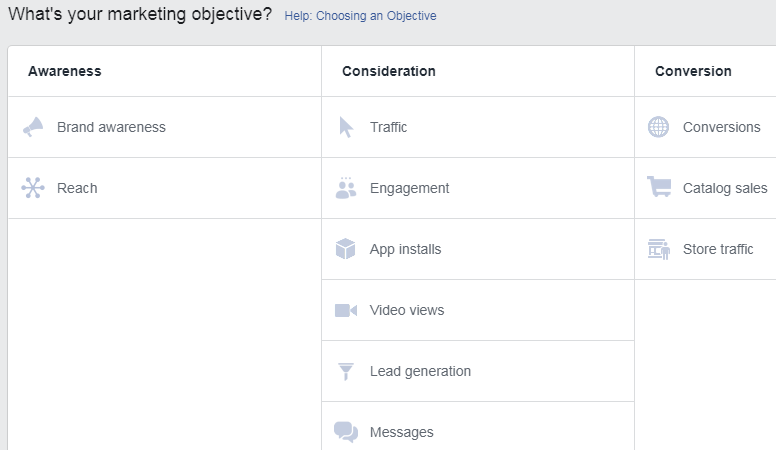
Based on your selected objectives, Facebook optimizes the placement of your ad to achieve maximized goal conversions. At various points of time, we voluntarily input various data on Facebook indicating our preferences and product choices in various genres. This may be through liking certain pages, following certain brands, or joining certain groups. All our likes, shares, and shared emotions form a huge tranche of data which is worked upon by Facebook to show us advertisements we are most likely to engage with.
3. Set Up Your Target Audience
You can proceed to set up your target audience after naming your current Ad set. This is an important step for those learning how to advertise on Facebook. You can create a New audience where you specifically mention the geographical areas you want to target. This can be country-specific or even city-specific, with the option of expanding up to 50 miles from a selected city. Next, you will have the option of refining your target population in terms of user age, gender, and language.
Based on your product and services, you can selectively target users who are most likely to engage or convert. Facebook gives you a wide range of users’ interests to choose from. At every stage of selection, you get an idea of your potential audience size by tracking the size meter on the right-hand side of your screen. Once the budget is finalized, this section also displays the estimated daily results of the campaign. Once you save your audience selection, this is what your screen looks like.

You can also opt for the Custom audience section where Facebook defines an audience for you based upon past visitors to your Facebook page or website and their interaction with your digital domain. Existing customer lists or even newsletter subscriptions can give Facebook an idea of consumer profiles most likely to interact with your business. If you are a new business with limited audience interaction, it is better to go for setting up a new target audience as limited data might hamper the automated selections.
4. Choose Your Ad Placement
At this level, you will be choosing the places where you prefer to show your Facebook ad and getting to know how do Facebook ads work. In devices, you can choose between mobile and desktop or opt for both. In the choices for platforms, the options available are Facebook, Instagram, Messenger, and Audience Network. Rather than limiting your Facebook ads to only Social Media, you can follow your target audience over thousands of high-quality apps, mobile websites, instant articles, and videos using the Audience Network.
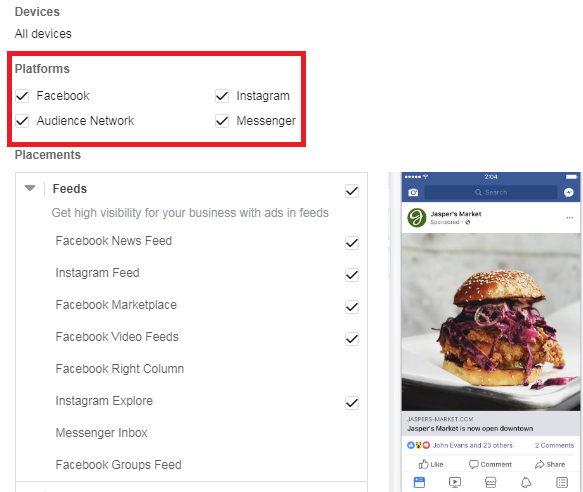
Advertising on Facebook provides a total of 18 placement options including feeds, stories, in-stream, search, in-articles, and network apps and sites. Placement of Facebook ads in the user feeds on Facebook and Instagram generates good visibility and is usually available across all ad formats in both desktop and mobile versions. The options for feeds and stories are available across Facebook, Instagram, and Messenger platforms.
Our Facebook advertisements can be video, a single image, or a carousel. Depending upon your ad objective, you have to select and finalize the placement. If you are selecting Instagram feeds for your video ads, the contents have to be of less than 60 seconds. For Instagram stories, the content duration for videos should be 15 seconds or less. These features provided by Facebook indeed help newbies on how to advertise on Facebook.
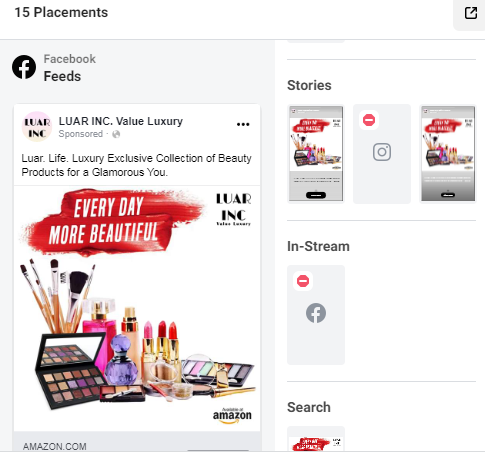
If you are setting up a simple ad targeted at brand awareness, traffic, or engagements you can also opt for the automatic placements option. Facebook’s algorithm allocates your ad budget across different placement options where they are most likely to show optimum performance. This option performs best for advertisements where you are promoting certain products or brands. If you are still learning how to advertise on Facebook, this is your best option.
In cases where you have goals of lead generation or conversion, automatic placements are not highly recommended. In case you are looking to push through a sales process or looking for signup through a lengthy registration process, your ad may be more suited for desktop conversions. Most businesses trip at this point as the ad budget is wasted where it is least likely to have any impact.
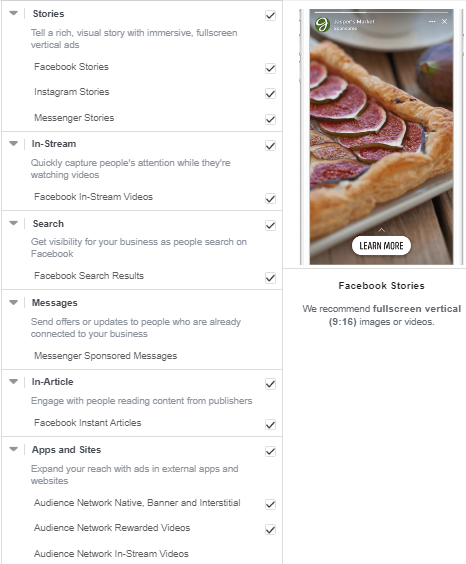
How To Run Facebook Ads?
Facebook disproportionately allocates a major portion of your ad space to mobile devices and audience networks where the CPC may be low but the chances of actual conversion are not very high. Such Facebook advertisements are ideally suited for the desktop audience and might hurt your ROI and CTR rates if displayed over all possible placement options.
Ads targeting app activity and mobile downloads are equally wasted on the Desktop platform. The Instagram audience, for example, is ideal for brand building and brand awareness through stunning images and well-edited crisp videos, but not for high-value conversions. Messenger ads can be targeted at only those clients who have messaged you earlier and are ideal for retargeting, upselling, and event registrations.
5. Choose Your Budget
For those learning how to advertise on Facebook, this is where you choose how much you spend on your campaign. You can opt for a lifetime budget or a daily budget. Your Facebook advertisements may run continuously or you can enter a start and stop date to be specific. Facebook also provides the option of daytime ads where the ads will be running at your selected geographical region only at certain times of the day or at certain days in a week.

The ad delivery can be optimized for link clicks, landing page views, impressions, or unique page views. This selection directly affects who sees the advertisements on Facebook. Selecting link clicks will take the ad to those who are most likely to click on ad links while opting for impressions will deliver the ad to your target audience the maximum possible numbers a day.
The cost control options require expert knowledge of how Facebook ads work including cost caps, bid caps, and bidding strategies. If you are a beginner, it is advised to go for Facebook recommended cost control options. Whether you want to get charged for link clicks or impressions is also an option- Facebook lets you choose according to your ad objective.
6. Go Creative With Your Ad
It’s time for the most creative part. You can choose between a single image, video, carousel, or a collection of items for a full-screen mobile experience. No matter how accurate the targeting and placements are, the actual conversion rate is dependent on the creative quality of the ad.
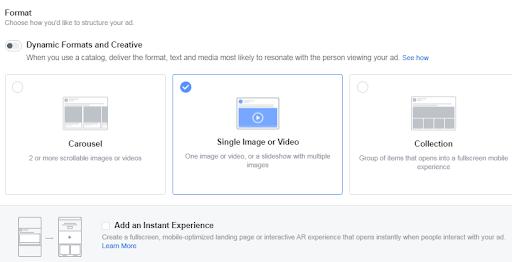
Users scroll through hundreds of images and videos daily on their newsfeed and it requires something special and different to make an impact. A vibrant color combination with catchy taglines makes for a perfect ad image.
Facebook also clearly mentions the specifications for Facebook ad image size. Advertisers can opt for different images with caption combinations to appeal to a wide variety of audience choices and preferences.
It has been observed that video ads or carousels attract a much higher viewership compared to static image advertisements on Facebook. Over 100 million hours of videos are watched on Facebook daily and 85% of videos are watched with their volume muted. This calls for the creation of unique and engaging videos with graphic content and a clear text message for successful Facebook marketing. To create captivating video ads for your Facebook marketing campaigns, it is beneficial to start by creating video storyboards. They provide a visual roadmap for your videos, allowing you to carefully plan and organize each scene, transition, and messaging, ensuring that your ad effectively communicates your brand’s story and captures the attention of your target audience.
7. Performance Analysis And Tracking
By now you would have learned how to advertise on Facebook, and you would have published your ad. Once an ad has been published, it is very important to keep a track of performance and goals attained. Website visitors, engagements, and actions can be tracked from the analytics code installed on the website itself. Facebook also provides options for tracking different performance matrix. You can check your reach in terms of gender breakdown, placements, and detailed city-wise locations. This gives a clear picture of the ad reach and engagement over all platforms. Overall ad performance can also be tracked from the Ad manager section in the dashboard which gives a detailed account of the amount spent, results, and Facebook ads cost per click. Additionally, with the integration of no-code AI tools like Graphite Note, you can now effortlessly predict the outcomes of future campaigns, optimize your ad spend, and refine targeting strategies based on historical performance data and predictive analytics.

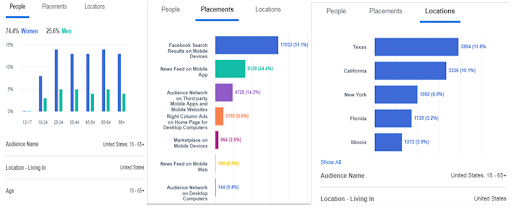
Final Thoughts
Facebook ads come with varied options to choose from at every single stage of implementation. Instead of proving to be a distraction, this can be a boon once you get comfortable with how to advertise on Facebook. Initially, you can go for A/B split testing if you are new to the marketing domain and not sure of the exact target parameters of your ad. With adequate preparation and experience, you can surely hit the bull’s eye in a short period.
Latest Posts
-
Japan, South Korea Lead 157% AI App Growth as Users Hit 666M
-
How to Optimise Your Videos for SEO
-
Data-Driven Influencer Selection in Video Marketing
-
How to Use Video Walkthroughs to Transform Your Real Estate Marketing Strategies
-
How Web Hosting Impacts Video Marketing Success: A Guide for Small Businesses



